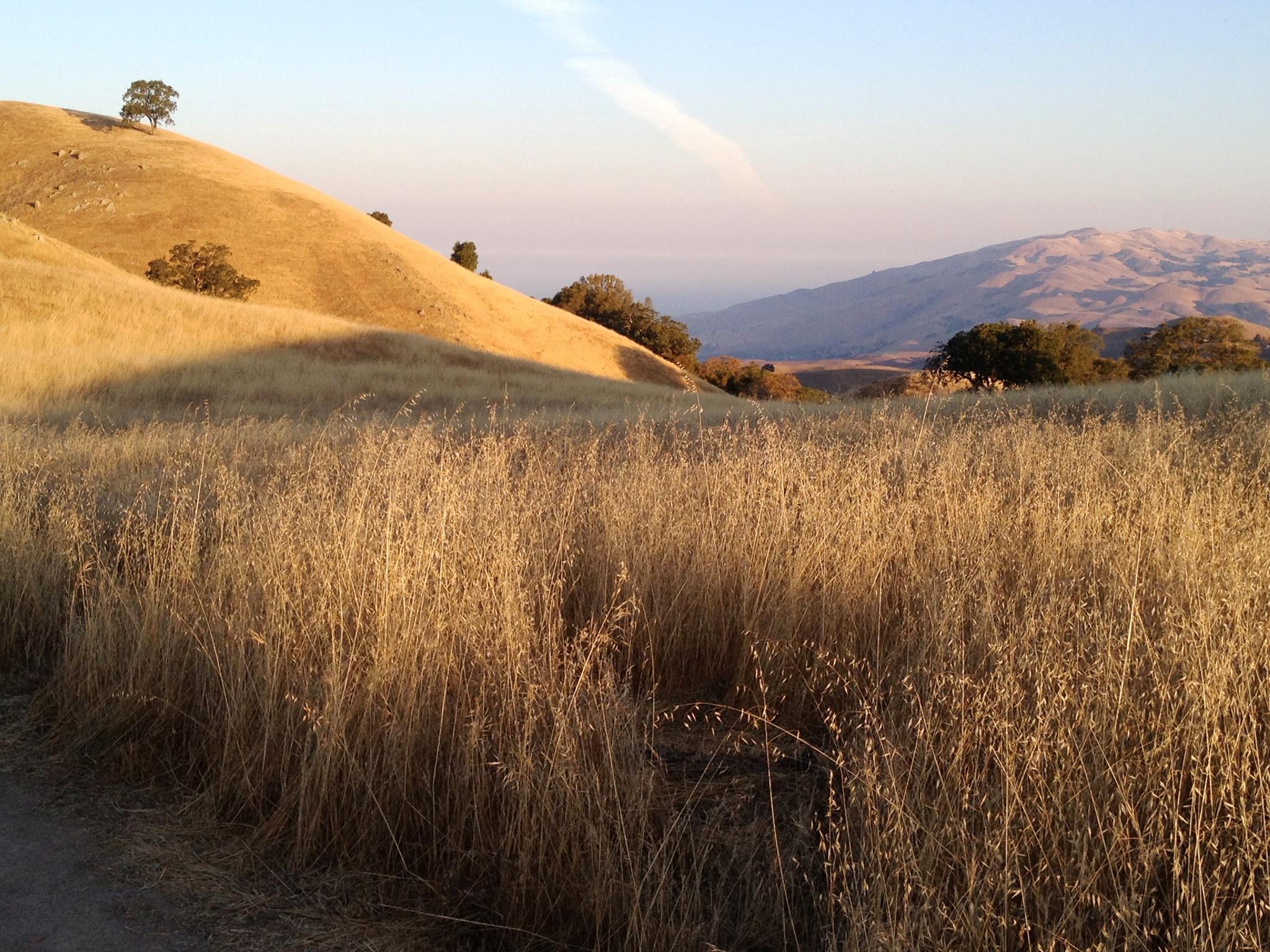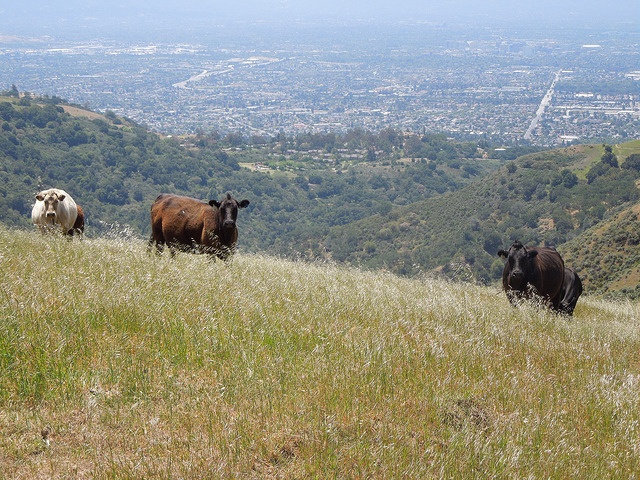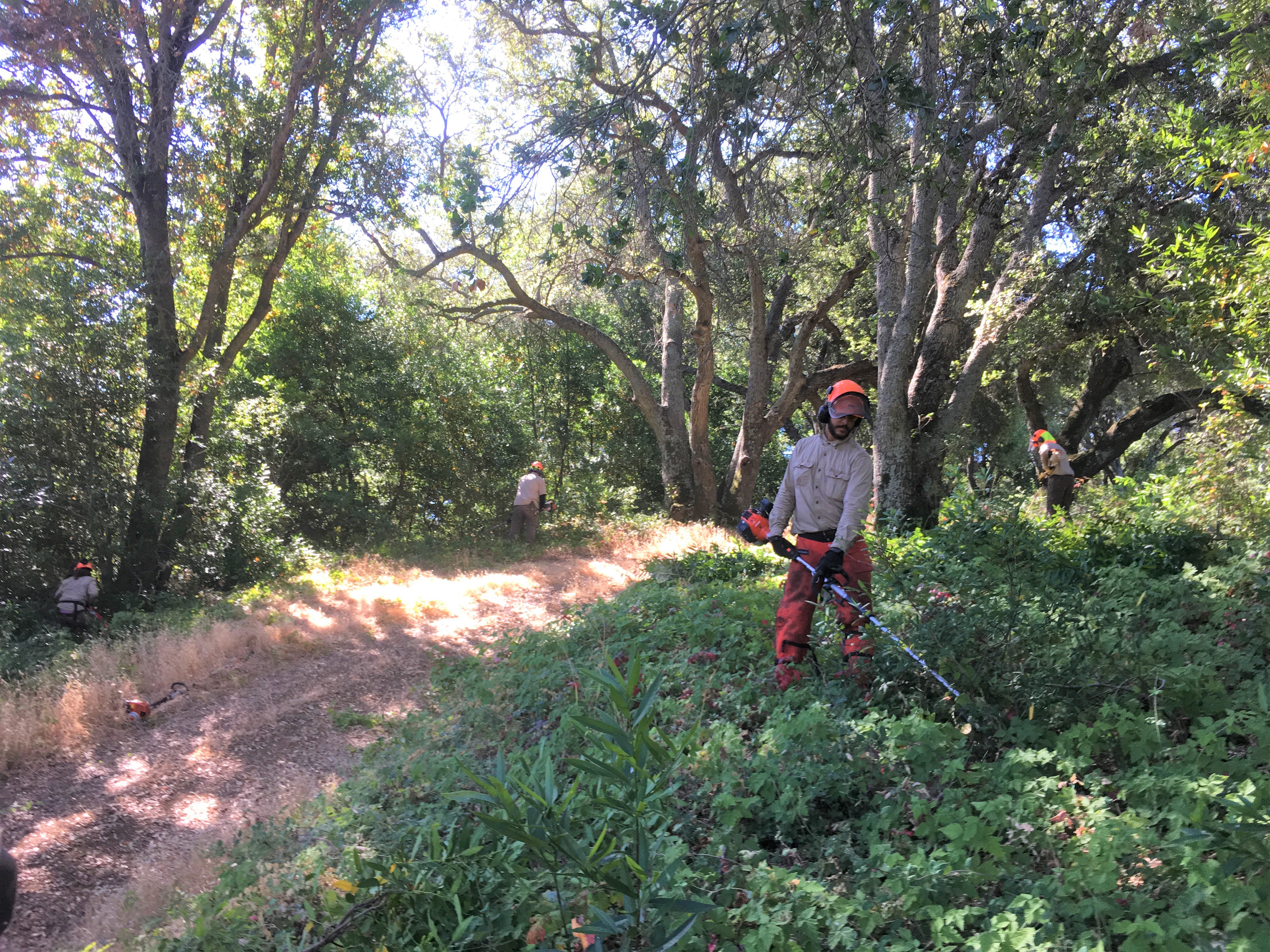As the weather warms up, the Open Space Authority field team responsibilities shift to prepare for the summer season. In addition to getting the preserves ready for an increase in visitors, the team is beginning to prepare for the ever-growing threat of wildfires.
“We’re doing a lot of things right now to reduce the risks of wildfire,” said Derek Neumann, Field Operations Manager.
At normal intensity and speed, wildfires can be a natural and beneficial process to clear out old vegetation growth and allow for certain fire dependent plants to grow and evolve with changing plant and animal diversity. Unfortunately, urban adjacent wildfires are becoming increasingly more intense and fast-moving with longer droughts and rising temperatures due to climate change. California has seen a number of massive wildfires in the last few years causing catastrophic loss of life, homes, and livelihoods. Closest to home, the Loma Fire burned through the Santa Cruz Mountains in 2016. While this didn’t cause any human casualties or widespread neighborhood impacts, the losses were between $29 million and $34.5 million in economic impact.

Wildfires are fueled by dry vegetation, particularly the fast-growing invasive plants that have taken hold of many of our landscapes. One of the field team’s primary tasks this time of year is to make sure this vegetation is trimmed down to stubble in key areas across the preserves, especially along roads that serve as both evacuation routes and where fires can be started by automotive sparks or inappropriately tossed cigarette butts. Field staff do this by mowing, manual whipping, and even by moving herds of grazing cattle around to focus their feeding on high-risk areas. Cutting the grass back on these strips of land, or “fuel breaks,” creates large buffer zones that can stop fires from spreading across the road. The team also pays careful attention to mowing and whipping down additional buffer zones around all structures and utility poles, and in designated equipment staging areas and helicopter landing zones, so emergency crews can access the properties, if needed.

The Authority manages 25,000 acres of land, more than 35 miles of roads, and 25 miles of trails throughout the preserve system. Heading into summer, the Authority reviews the system maps and updates them with any new infrastructure so they are ready in case of evacuation or emergency response. Some properties have dedicated water tanks that can be tapped for fire response. Several large watering ponds built for grazing cattle also double as “dip points,” that firefighting helicopters can pull from if needed.

As fire season approaches, the Authority starts to build fire awareness and response into everything it does. Every truck the agency owns has water tanks and basic fire fighting equipment so field staff can respond to small fires before they grow out of control. As we get closer to July 4, the risk of fire posed by illegal fireworks increases, so Authority staff are scheduled to patrol lands later into the evening. All staff agency-wide are trained in fire safety and prevention and instructed on how to respond.
While we can never completely remove the risk of wildfires, careful planning and attention can help to reduce the likelihood that small blazes will grow out of control.
How can open space visitors help prevent wildfires? For your safety, please follow these instructions:
- Do not smoke. Smoking is never allowed on Authority trails or properties.
- No open flames. Fireworks, barbecues, and campfires are never allowed on Authority properties. If you are barbecuing or have a campfire at a designated park or private property where this is allowed, make sure you monitor it the entire time and completely extinguish your fire when you are done.
- Be vigilant - if you see smoke or signs of fire, don’t assume someone else already reported it. Call 911 immediately.
Find more visitor safety tips here.

